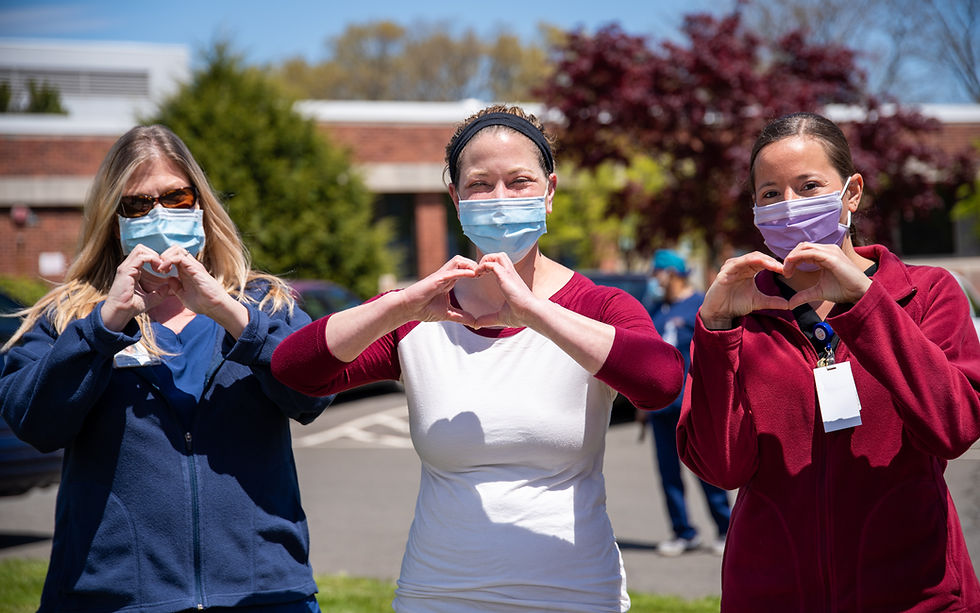How Can We Treat and Prevent Burnout?
- Rachel Ogilby

- Nov 14, 2022
- 3 min read
If you’re reading this, you likely already know what burnout is, what causes it, and who it affects (if you need a quick brush up, read this article). But - what can we do about burnout once it’s become part of our workplace culture?
The good news – it’s not hopeless! There are many evidence-based ways to treat burnout. We know that addressing burnout can improve personal wellness, patient safety, patient and staff satisfaction, and quality of care.

How Can We Treat and Prevent Burnout?
Evidence-based ways to reduce burnout include building our individual resilience. Resilience is personal protection from burnout. Resiliency building involves developing support systems to combat stressors. You can find more ways to develop resiliency here, with articles that discuss optimism, time outdoors, work life balance, sleep, and more.
Of course, we can do things to focus on our resilience as individuals. However, the changes that make the biggest impact on healthcare burnout are organizational and system wide.
Organizations can implement resiliency training, as this has shown to reduce burnout, reduce nurse turnover, reduce costs, improve patient outcomes, improve nurse job satisfaction, and more.

Mindfulness is another way to reduce burnout and improve resilience. Mindfulness refers to the practice of learning to focus attention and awareness on the moment-by-moment experience with an attitude of curiosity, openness and acceptance.
Mindfulness training has shown improvements in stress and burnout over time.
Additionally, resilience training programs with a focus on mindfulness have shown improved symptoms of anxiety, depression, burnout, and PTSD and improved levels of resilience.
These two alone cannot effectively address burnout unless leadership is simultaneously reducing and eliminating barriers to nursing workflow, such as making sure there’s appropriate staffing and addressing workplace environment concerns. A healthy work environment is one of the most powerful things an organization can achieve to both improve patient outcomes and reduce nurse burnout.

System-Wide Organizational Change
In a systematic review of nurse work environments, 54 articles revealed that healthy work environments positively impact nurse outcomes such as psychological health, emotional strains, job satisfaction and retention, nurse job performance and productivity, patient-care quality, and hospital accidents and safety.
Good work environments even attenuated the relationship between nurse burnout and mortality, failure to rescue (death after an in-hospital complication), and length of stay.
They also found the more satisfied a nurse is, the higher the job performance, quality of care, and staff retention (wow!).
What does this mean? Nurse leaders looking to simultaneously alleviate nurse burnout and improve patient outcomes could achieve both by improving their work environment.
What Does a Healthy Work Environment Look Like?
For nurses, having a supportive work environment means having the appropriate autonomy, adequate staff and resources, and good working relationships with physicians and management. When these conditions are in place, nurses have 28% lower odds of developing burnout.

Let’s talk about those three points quickly.
Appropriate autonomy:
Professional autonomy empowers nurses to exercise their discretion and respond efficiently to patient care issues.
Adequate staff and resources:
Nurses have significantly lower levels of burnout in environments with ample staff and supportive services, reasonable workloads, and sufficient time to take 30 minute breaks.
Good working relationships:
Increased participative decision making among nurses reduces role ambiguity and role conflict. Hospitals that have high nurse participation in shared governance have 36% lower odds of burned out nurses in comparison to hospitals with moderate levels of engagement in shared governance.
Why Should We Focus on Nurses?
Caregivers are often described as the fourth pillar of healthcare. Healthcare workforce satisfaction and competency should be a primary focus of any public health system.
Obviously all clinicians are at risk for burnout, and hospitals and organizations SHOULD be looking at burnout for all of their healthcare workers! However:
Nurses are the largest healthcare workforce who provide direct patient-care and are consequently one of the most significant ingredients of health system infrastructure
Patient lives are dependent on the well-being of the nurses caring for them
Rates of nurse turnover are inversely related to quality metrics
Studies show that 40% of nurses plan to leave the profession in the next decade, and 43% of new graduates leave the bedside within the first three years of practice
The ability to attract and retain nurses in the profession is critical to maintaining quality patient-care.

We know that nurses drive our patient outcomes, quality care, and the future of healthcare. It’s time to take care of them!



Comments